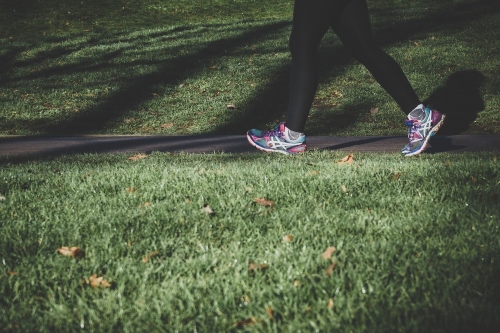
Our bodies are designed to move. Physical activity and exercise increases our energy levels, enhances our mood and increases our energy levels. For optimal health, we need a combination of movement that helps us to strengthen, stretch and increase our stamina.
Now more than ever we are living increasingly sedentary lives which do not provide the essential balance of movement our bodies crave. We have become more static and stationary than ever before and our bodies are suffering.
Reliance on digital technologies
COVID-19 and the introduction of the lockdown has compounded our reliance on digital technologies further. Many of us are working from home, meaning we are spending far greater lengths of times on digital devices and screens. Of course, our devices offer us limitless possibilities and opportunities, but the downside is that we have become increasingly disconnected with our own bodies. I would argue that some of us are more connected to our devices than we are our bodies!
Until about 30 years ago, medicine and science treated the mind and body as two separate entities. Seeing the body as rather inconsequential, and more a servant to the mind. Thankfully the tide has begun to turn, with more research showing the mind and body to be a collaborative system. We now know that our thoughts, feelings and beliefs affect our physiology, and what we do with our physical bodies impacts our mental state.
How our bodies and minds are connected
Exciting developments have been occurring in psychiatry, with evidence demonstrating that there really is no separation between the body and the mind. Anyone who has ever experienced acute anxiety or stress will know that it is very much a whole-embodied experience, with studies also showing that the body holds on to past traumas. Scientists now claim we have a second brain which is part of our digestive system, and lives within our guts. In turn, gut health has been shown to potentially affect our mood, wellbeing and cognitions. The truth is, our bodies are constantly sending us messages, but we struggle to listen.
Tuning in with our bodies
We often tend to ignore, supress or push down unwanted, uncomfortable feelings. It is important that we give ourselves time to pause and take notice of how our body is feeling and be aware of any tightness, tension, aches, pains, niggles or bloating. We also need to think about our muscles and if they feel relaxed or tense. As many of us work from home, our posture and alignment may also cause us to hunch over and stick our heads forward as we work at a computer.
We should listen to what our bodies need.
Movement to improve our physical and mental wellbeing
It is often small changes that can make a difference to how our bodies and minds connect and feel.
If you are unsure where to begin, here are some ways you may find helpful:
- Raise your energy levels by moving for ten minutes
- Get to know your body by recognising where you experience stress and tension
- Take the time to slow down a try a mindfulness body scan – to identify when you have become disconnected
- Build a 10-minute stretching routine into your day to support muscle health and mobility
- Take regular breaks to increase productivity
- Become aware of your posture as this can impact our wellbeing and how we feel
- Check your workstation to make sure you are comfortable
- Try moving differently with exercise such as Tai Chi, Qui Gong and yoga
- If you have a tendency to overthink and analyse, you may find this blog from Headspace useful
- Try grounding techniques to help relieve anxious thoughts